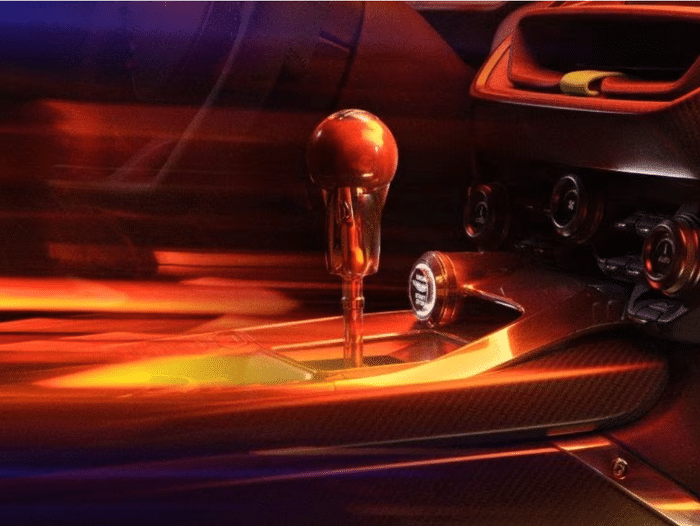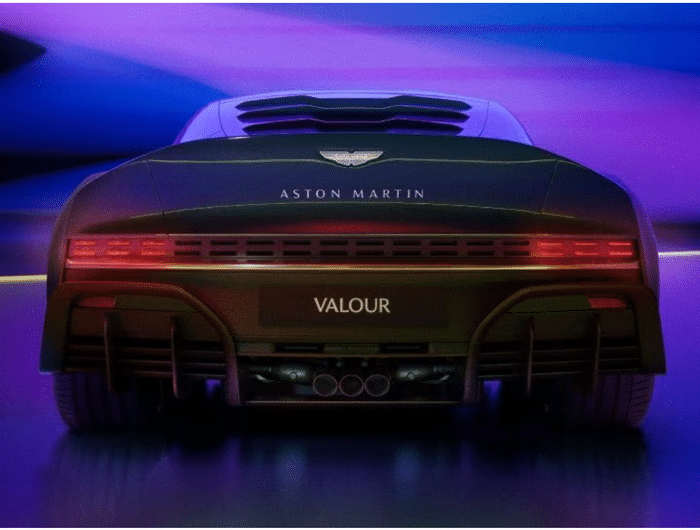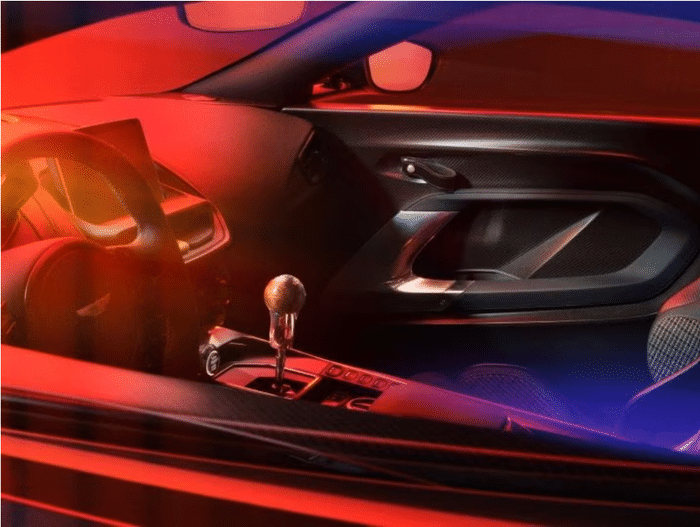Aston Martin has taken off the covers of its new supercar – the Valour. It gets design cues from the original V8 Vantage and 1970s RHAM/1 prototype racer – known as ‘The Muncher’ – and is the brand’s 110th birthday present to itself. What’s most special about it is that it celebrates the brand’s hallowed V12 engine, and here, it comes mated to a manual gearbox.
- Only 110 units of the Valour will be produced
- Is powered by a V12 engine derived from the DBS
- Deliveries to start between September and December this year
Aston Martin Valour exclusivity
You’ll also notice design cues from the Victor, which was based on a surplus One-77 prototype chassis, but the Valour is built around a bespoke body structure thought to be derived from the V12 Vantage. The design is a softer touch when compared to the Victor, but retains its bulging bonnet and abrupt Kamm-tail rear end.
Aston Martin will only produce 110 units of this supercar, and the owners will be invited to customise their car through the firm's Q bespoke service, where they will be offered one-off liveries, an exposed carbon-fibre body finish and loads of interior personalisation options.
Aston Martin Valour powertrain and dynamics
This new Aston gets a 5.2-litre, 715hp, twin-turbo V12 engine mounted at the front that is based on the DBS Superleggera, and produces 752Nm of torque that’s catered to the rear wheels through a specially designed 6-speed manual gearbox and a mechanical limited-slip differential. Mating the V12 to a manual gearbox (the DBS, DB11 and Vantage all use ZF-supplied automatic gearboxes) was “a big part of honouring that driver-pleasing character”, said Aston Martin engineering boss Simon Newton to our sister publication Autocar UK.

The dynamic brief of the Valour was to deliver the state-of-the-art driver’s car with the “true heart and soul of a timeless analogue classic”, said Newton, as is emphasised by the visible shift linkage on the manual gearbox. Modifications include the fitment of front and rear shear panels, a rear suspension tower strut brace and fuel tank bracing, boosting rigidity.
The car also receives adjustable dampers and a new power steering set-up intended to deliver greater precision feedback through the wheel. Carbon-ceramic disc brakes measuring 410mm x 38mm with six-pot callipers up front and 360mm x 32mm discs with four-pot callipers at the rear come as standard and are tucked behind staggered width 21-inch ‘honeycomb’ alloys that are similar to the DBS 770 and Victor cladded in Michelin Pilot Sport S 5 tyres. The brake set-up provides a 23kg reduction compared with steel equivalents, the exhaust system is made to a sub-millimetre thickness to save a further 7kg and the bodywork is made entirely from carbon-fibre.
Aston Martin Valour exterior and interior
The clamshell bonnet incorporates a massive 'horse shoe' vent and twin NACA ducts to provide ample ventilation for the twin-turbocharged V12 below. The characteristic grille design of Aston Martin has evolved to improve both form and function. Its core part is marked by aluminium strakes, while massive carbon fibre intakes on either side supply cool air to the engine and brakes. They also frame Valour's distinctive round LED headlights, which sit behind a rakish eyebrow-like grille with a daunting effect.

The front splitter and arch vents work with the rear windscreen louvres to generate a vortex and flow air neatly over that tail. The tail-light design is equally spectacular, with clusters of LED light blades (six on each side) mimicking the Valkyrie hypercar. A full-width metal accent, cut from a solid billet and polished to a perfect finish, delineates the rear end, dramatically separating the top and lower parts. The bumper is effectively a single unit of a massive diffuser with vents and blades and also houses the in-line tri-exhaust tips.

On the inside, you get a timeless two-seater cockpit to celebrate Aston Martin's heritage and a beautifully sculpted wooden manual gear lever. The dashboard design has been carried over from the Vantage as is evident from some of the switchgear and the positioning of the touchscreen infotainment system and AC vents.


































